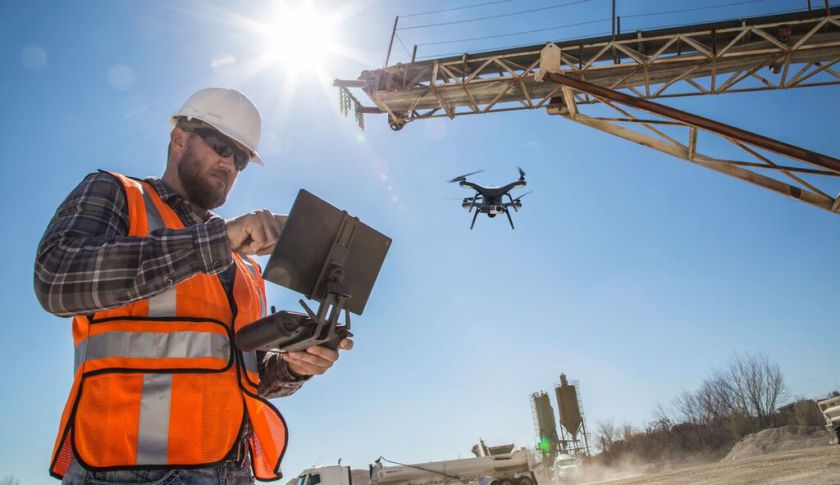10 Innovative Uses for Drones Beyond Delivery
While drones are widely known for delivering goods and military applications, scientists and inventors have been exploring many other creative uses for multicopters in recent years. Here are ten of the most interesting examples, ranging from demining to fighting poaching and malaria.
1. Combating Diseases
Researchers from Aberystwyth University in the UK use drones to search for areas in Tanzania where malaria mosquito larvae are found—a disease that kills 500,000 people annually. A drone can photograph a 74-acre (30-hectare) field in just 20 minutes. Scientists then analyze the images, and maps with marked larvae locations are given to helicopter crews, who spray insecticides only where needed. This targeted approach reduces costs and waste of expensive chemicals.
2. Measuring Land Areas
Drones offer an affordable way to conduct aerial photography and measure land areas. Researchers at the University of Tennessee used drones to help local farmers, who previously spent a lot of time counting cotton plants. A drone with a standard digital camera can photograph the fields in minutes, and image recognition algorithms count the plants. The accuracy is about 85%, and up to 93% with a multispectral camera.
3. Restoring Communications
Drones equipped with communication devices have been used to temporarily restore connectivity. For example, AT&T deployed its Flying COW drone with a compact cellular unit to restore service in Puerto Rico after Hurricane Maria in November 2017. One drone can provide 4G coverage over 40 square miles (104 sq. km) and is powered from the ground, allowing continuous operation.
AT&T first tested Flying COW in February 2017. Another cellular drone, the Yuneec Tornado, was tested in Spain in November 2017, operating for over 24 hours at 260 feet (80 meters) and providing 4G service with speeds up to 3 Mbps, powered by a flexible cable from a ground station.
4. Measuring Heart Rate
In September 2017, researchers at the University of South Australia introduced an image recognition algorithm for drones that can remotely measure a person’s heart and breathing rates. The algorithm detects tiny movements in the face and neck caused by heartbeats and breathing, then calculates their frequency. Currently, a drone with a GoPro camera can read this data from up to 10 feet (3 meters) away, with potential for greater distances in the future.
5. Assessing Disaster Damage
In August 2017, the U.S. Federal Aviation Administration (FAA) allowed rescuers to use drones to assess damage from Hurricane Harvey. This approach is safer for responders and allows drones to access hard-to-reach or dangerous areas. In March 2017, Singapore authorities announced plans to use drones to inspect subway tunnels for leaks and other issues, with software to automatically detect problems like cracks or water intrusion.
6. Shark Detection and Water Rescue
Researchers at the University of Technology Sydney developed software for drones to recognize sharks in images, with four times the accuracy of humans. Since September, drones equipped with this software have been patrolling Australian beaches. They also carry acoustic warning systems, life rafts, and emergency beacons for swimmers in distress.
In October 2016, Germany’s national lifeguard association (DLRG) tested a Microdrones multicopter for water rescue. Its task is to spot drowning people and drop inflatable cushions to keep them afloat until help arrives. In September 2016, Dubai authorities showcased a similar drone prototype.
7. Protecting VIPs
In August, the U.S. Secret Service planned to test a drone at a golf club visited by President Donald Trump. The drone was to monitor the perimeter using night vision equipment, powered and connected by cable for longer flight time and secure data transmission. The results of the test were not disclosed.
8. Selfies
In May 2017, Chinese drone manufacturer DJI unveiled the Spark, a miniature selfie drone controlled by hand gestures. Weighing just 10.6 ounces (300 grams), it can land on the user’s palm. Gestures can direct its movement, call it to land, or trigger a photo. The Spark features a 12 MP camera and can fly autonomously for 16 minutes.
9. Fighting Poachers
In May, the Lindbergh Foundation announced that drones monitoring elephant and rhino populations in South Africa would be equipped with image recognition software. Artificial intelligence developed by Neurala identifies people approaching the animals, allowing anti-poaching teams to respond quickly.
10. Demining
In August 2016, Afghan refugee Massoud Hassani, living in the Netherlands, demonstrated a 3D-printed drone prototype called Mine Kafon for detecting and neutralizing landmines. The drone is equipped with a camera, metal detector, and robotic arm. It creates a 3D map of the area, lowers the metal detector to search for mines, and uses the robotic arm to drop small detonators, then flies to a safe distance to trigger the explosives.



